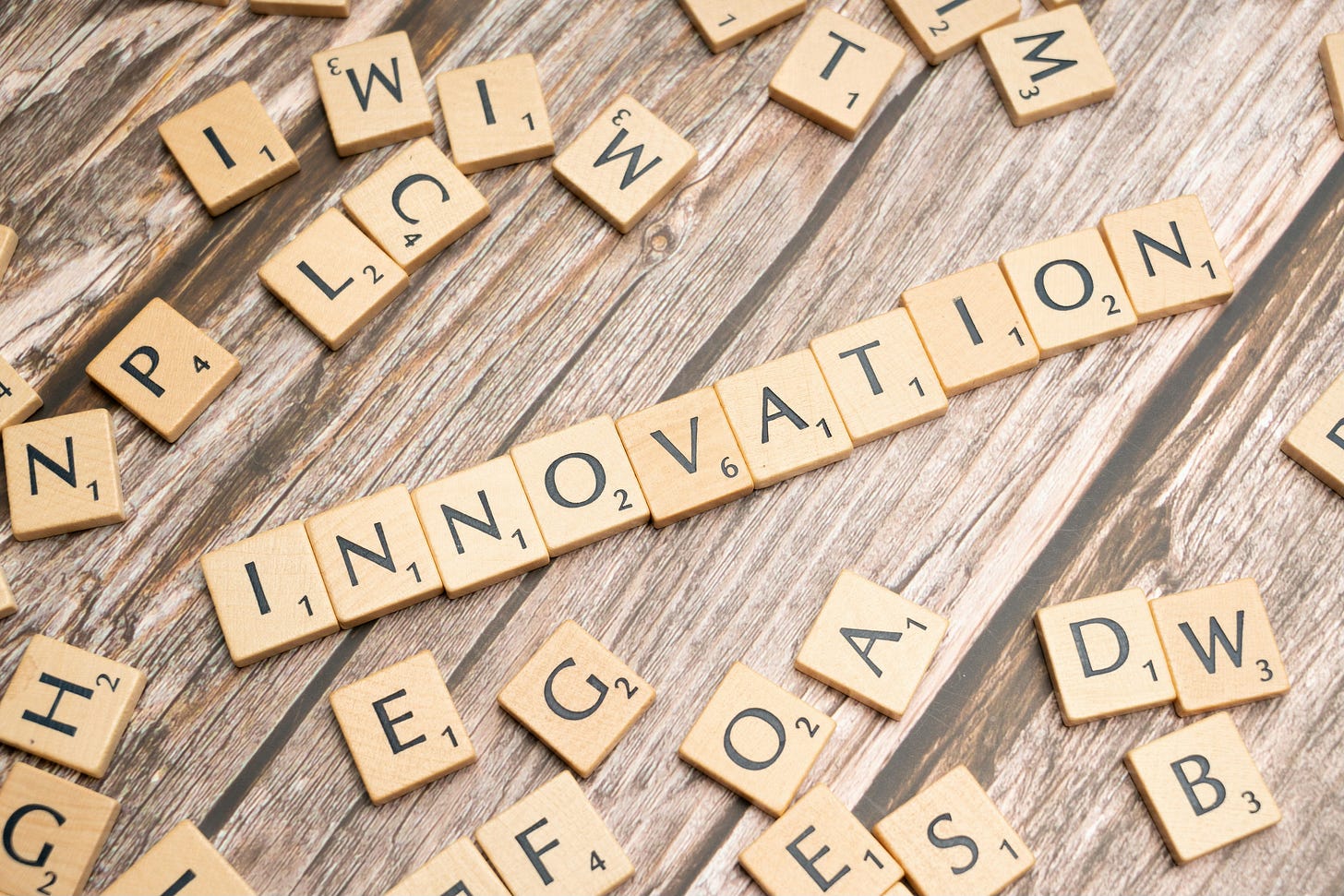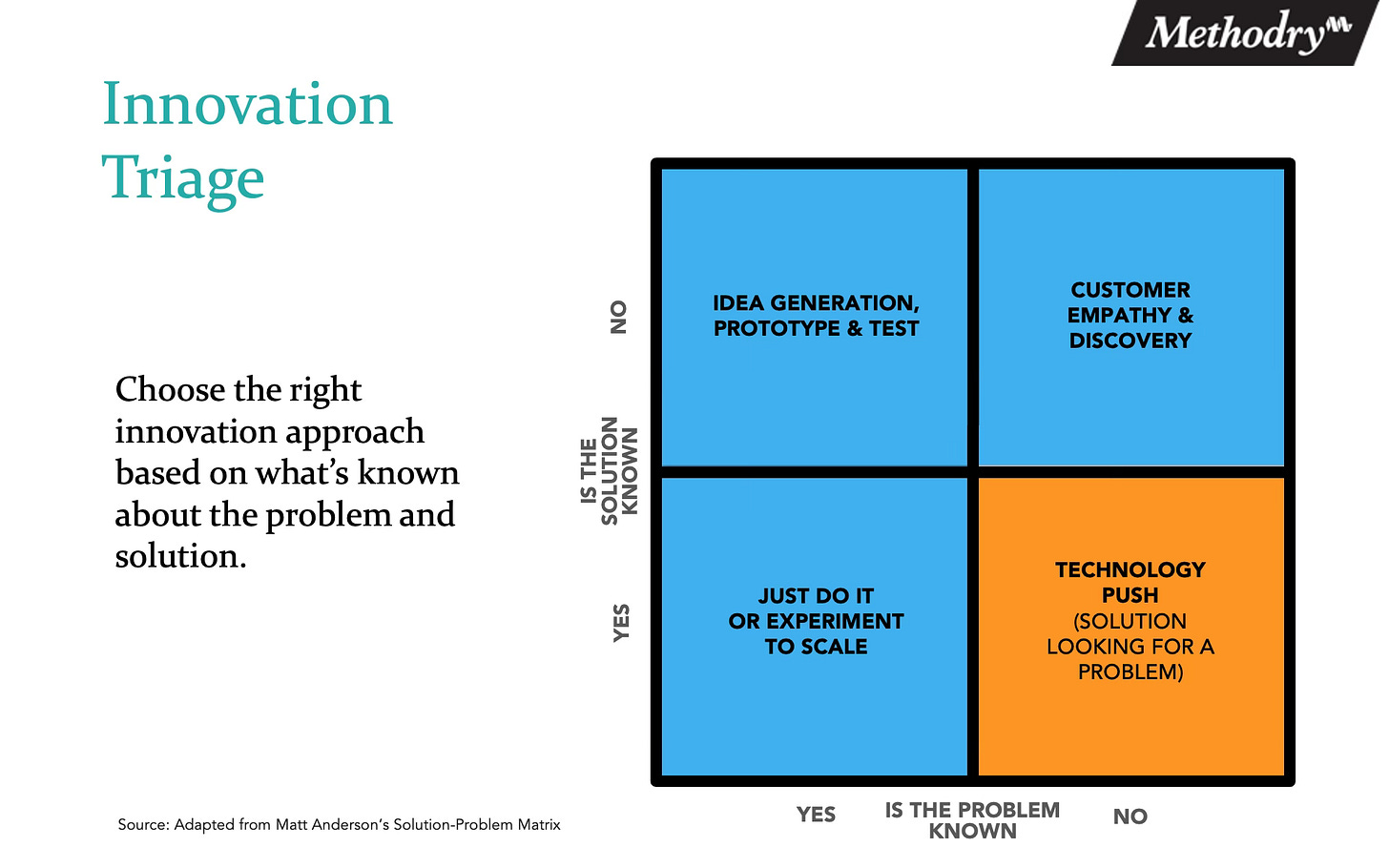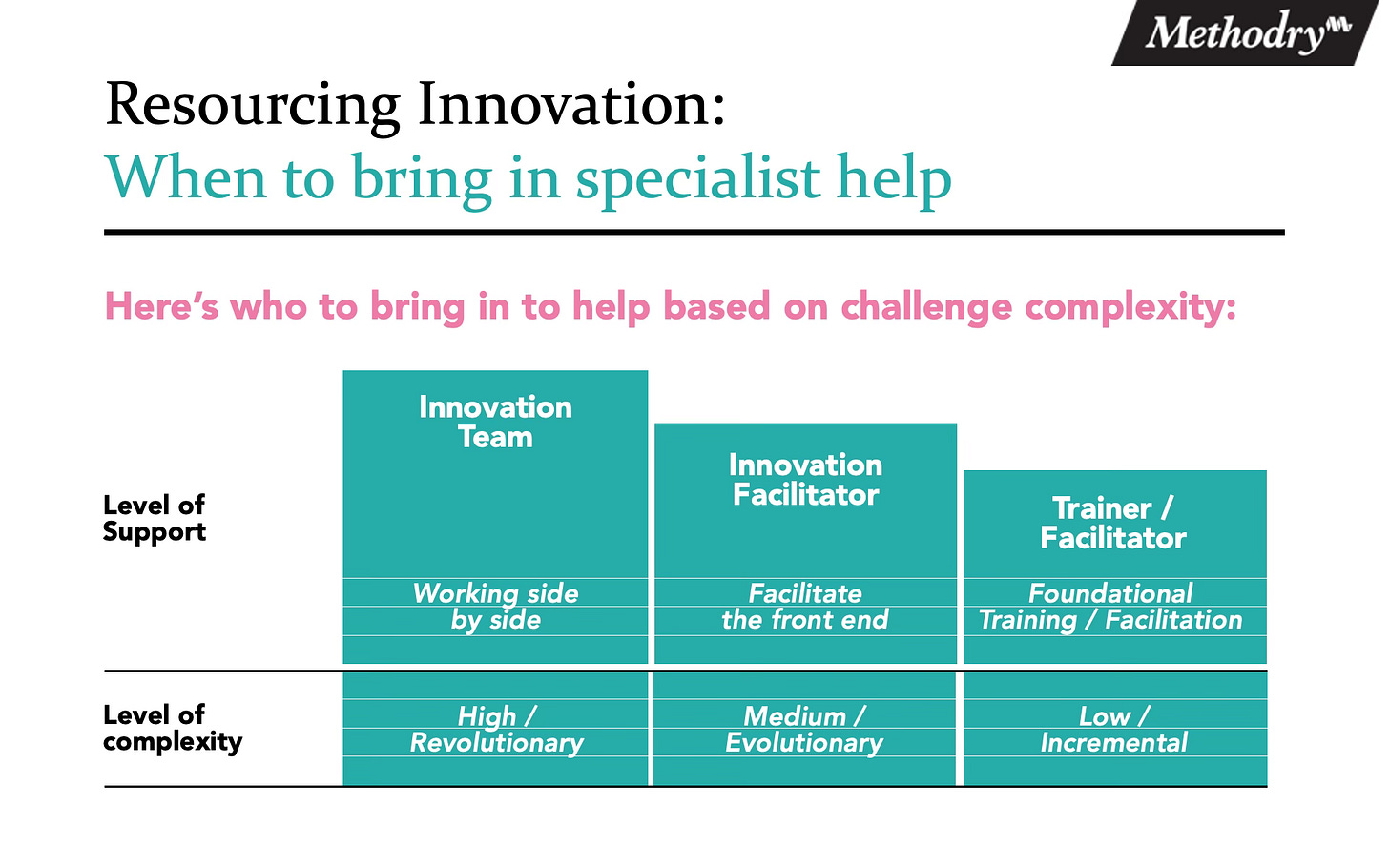When to Take an Innovation Approach to Business Problems
A Leader’s Guide to Knowing When—and How—to Apply Customer-Centric Innovation Effectively
In a world of accelerating change, technological advancement, unpredictable market shifts, and rising customer expectations, innovation has become a key methodology for modern leaders to tackle complex business problems.
While innovation is often associated with creating new products and services, its value goes much further. It can be applied to reinvent business models, design better ways of working, and transform internal processes and systems.
But leading innovation is fundamentally different from leading business-as-usual projects. Knowing when, where, why, and how to apply an innovation approach can be challenging—especially for leaders encountering innovation for the first time. Mastering this distinction can be the difference between success and failure, and a powerful lever for career growth.
A strategic method for solving the right problems
One of the most versatile and powerful approaches is customer-centric innovation–a human-centred, creative and experimentation-driven approach to problem solving. It integrates methods and tools like Design Thinking, Business Model Canvas, and Experimentation to help organisations create desirable, viable, feasible solutions–faster and with less risk.
Here’s how customer-centric innovation flows:
Design Thinking helps you uncover unmet customer needs and generate and validate solutions to solve these (desirability).
Business Model Canvas helps you further explore desirability, while also beginning to explore feasibility and viability.
Experimentation enables you to de-risk and validate both your solutions and business model by running small-scale experiments–progressing the successful ones while pivoting or perishing the failed ones.
Once you’ve completed these front-end stages of innovation and validated that you have a desirable, viable, and feasible solution, you move into business case development, build, and go-to-market planning (back end of innovation).
Used well, it’s a reliable method for tackling complex problems with confidence.
The challenge for leaders? Knowing when—and how—to apply it.
The Innovation Triage: When to apply customer-centric innovation
Think of this like triage in an emergency room. Not all problems need the same treatment.
Customer-centric innovation is most effective when:
The root causes of a challenge are unclear
There could be multiple potential solutions
The problem or solution is not fully known
Use the Innovation Triage framework* to diagnose whether you need a customer-centric innovation approach— or if traditional business execution will do. If innovation is needed, which method should you use next?
You don’t know the customer problem, or the solution: If you don’t know the customer problem (or need) for your challenge, start with customer empathy and discovery.
You know the customer problem, but not the solution: If you know the customer problem but not the solution, start with idea generation, followed by prototyping and testing.
You know both the customer problem and the solution: Then you likely don’t need an innovation approach—just implement the solution. In fact, trying to apply customer-centric innovation in these cases can be overkill. However, if you don’t know if it will work at scale, start with experimentation.
You know the solution, but not the problem: You have a solution in search of a problem—time to go back to discovery.
*Source: adapted from Matt Anderson's Solution-Problem Matrix
Once you've diagnosed whether innovation is needed, the next step is tailoring the approach to match the level of ambition and complexity.
Tailoring your approach to the level of innovation ambition (Horizons)
Not all innovation is revolutionary. The complexity of your challenge—and the level of ambition—will shape how you apply customer-centric methods.
Here’s a framework to help you think about and apply it:
Incremental (5 days to 3 months*) Optimising existing products, services, or business models for current customers. Example: Smartphone camera improvements.
Evolutionary (3 to 6 months*) Creating new offerings for existing customers or entering adjacent markets. Example: Apple introducing AirPods as a new, complementary product for iPhone users.
Revolutionary (6 to 12+ months*) Breakthrough new products, services, processes, or business models for new customers. Example: The introduction of the smartphone.
* Timeframe refers to the front end of innovation.
A healthy innovation portfolio should include a mix of all three types—delivering both today’s revenue and tomorrow’s revenue.
And as a bonus: regardless of the ambition level you’re focusing on, you’ll often uncover ideas that span all three levels.
Don’t rush the front end
Evidence shows that quality up-front work in the front end of innovation leads to higher success rates. Yet many organisations underinvest in this critical phase, jumping too quickly into development. The result? More rework, delays, and costly failures downstream.
Paradoxically, taking the time to explore the problem thoroughly often speeds up the overall timeline—reducing rework and decision paralysis later on. Investing more time up front can dramatically improve outcomes.
Resourcing the effort: when to bring in specialist help
Depending on whether you’re running a business-as-usual or innovation team, you may or may not have specialist innovation skills in your team and may benefit from bringing in expert support who can help accelerate progress, reduce risk, and boost confidence in your outcomes by guiding your team.
Here’s a framework to help decide when and who to bring in to help, based on the level of innovation and degree of challenge complexity:
Low complexity-incremental: For less complex challenges and incremental innovation, foundational training or having an innovation facilitator —backed by a clear process and toolkit—will often be enough.
Medium complexity-evolutionary: For medium-complexity and evolutionary challenges, having an experienced innovation facilitator to guide your team through the process would be highly beneficial—and a worthwhile investment.
High complexity-revolutionary: For highly complex and revolutionary challenges, having an innovation team–comprising an innovation facilitator, researcher, and designer to work alongside your team through the front-end, or even the entire process, would be invaluable and significantly increase your chances of success.
Having the right capability in the room—internal or external—can mean the difference between spinning your wheels and making confident progress.
Final Thought
Customer-centric innovation is not just for "big, bold" initiatives—it’s a repeatable, scalable method for solving the right problems in the right way, across all levels of innovation ambition.
For modern leaders, knowing when to use customer-centric innovation—and how to tailor the approach to the challenge at hand—is a crucial capability. It enables faster, more confident decision-making, reduces risk, and increases the likelihood of delivering meaningful outcomes. In today’s fast-moving, customer-centric world, that may be the difference between another missed opportunity—and your next big success.
Happy innovating,
Nathan
I am the founder of customer-driven innovation and growth firm Methodry and author of Innovator’s Playbook, published by Wiley. I help teams build their innovation mastery and work alongside them to innovate on their most important challenges.




